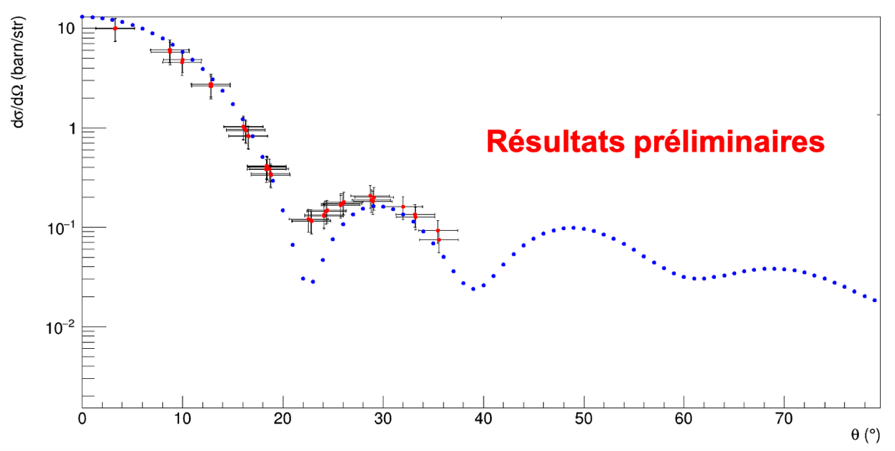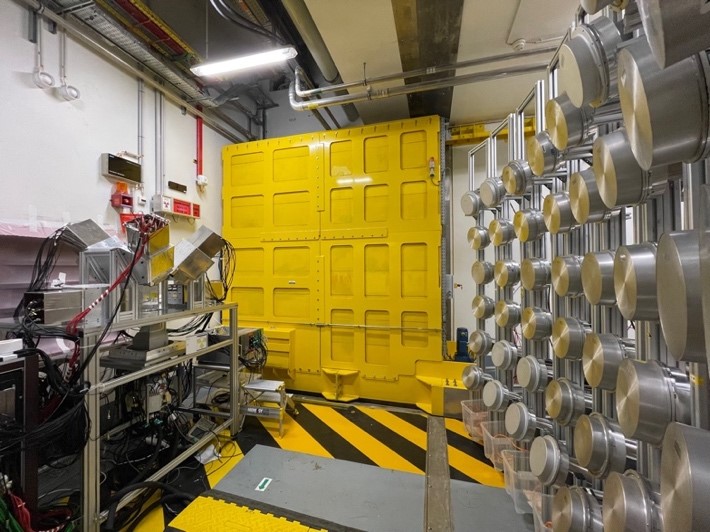
Figure 1: Representation of the excitation mode of the nucleus called pygmy dipole resonance (PDR). The protons and neutrons of the symmetric core are represented by the red and blue balls. The surplus of neutrons composing the "neutron skin" is represented in dark grey.
The pygmy dipole resonance (PDR) is a vibrational mode of the nucleus that occurs in neutron-rich nuclei. It is described as the oscillation of a neutron skin against a core symmetric in number of protons and neutrons (Figure 1). The PDR has been the subject of numerous studies, both experimental and theoretical. Indeed, the study of the PDR has been and still is of great interest since it allows to constrain the symmetry energy, an important ingredient of the equation of state of nuclear matter that describes the matter within neutron stars. Moreover, the PDR is predicted to play a key role in the r-process (a process that could explain the synthesis of heavy nuclei) via the increase of the neutron capture rate. However, despite numerous experiments dedicated to the study of the PDR, using charged particle or gamma-ray beams, a consistent description could not be extracted. Thus, new experimental approaches are needed to better characterize this vibrational mode of the nucleus.
In the framework of an international collaboration led by IRFU/DPhN and IJCLAB, an experiment to study the pygmy resonance in 140Ce (composed of 58 protons and 82 neutrons) has just been carried out at GANIL-SPIRAL2 at the NFS (Neutron For Science) facility. Thanks to the neutron beam delivered by NFS, the neutron inelastic scattering reaction could be used for the first time to probe the PDR. The experimental setup consisting of the new generation multi-detectors PARIS, for the detection of gammas coming from the de-excitation of the PDR, and MONSTER, for the detection of scattered neutrons, was used (Figure 2).

Figure 3: Angular distribution (differential cross-section as a function of the angle of the scattered neutron) of events corresponding to the neutron elastic scattering reaction on 140Ce. The experimental points, in red, reproduce well the theoretical prediction, blue points, resulting from microscopic calculations carried out by our collaborators of CEA/DAM.
The results obtained online are very encouraging showing in particular that
i) the elastic scattering, validating the reconstruction of the scattered neutron with MONSTER (Figure 3)
ii) already known excited states, validating the gamma detection with PARIS,
are well reconstructed.
The analysis of the data has been entrusted to Périne Miriot-Jaubert who has just started her PhD at DPHN under a CFR contract. This experiment has been funded by a P2IO Emerging Project (PIRATE).
Contact: Marine Vandebrouck (CEA DRF/Irfu/DPhN)




